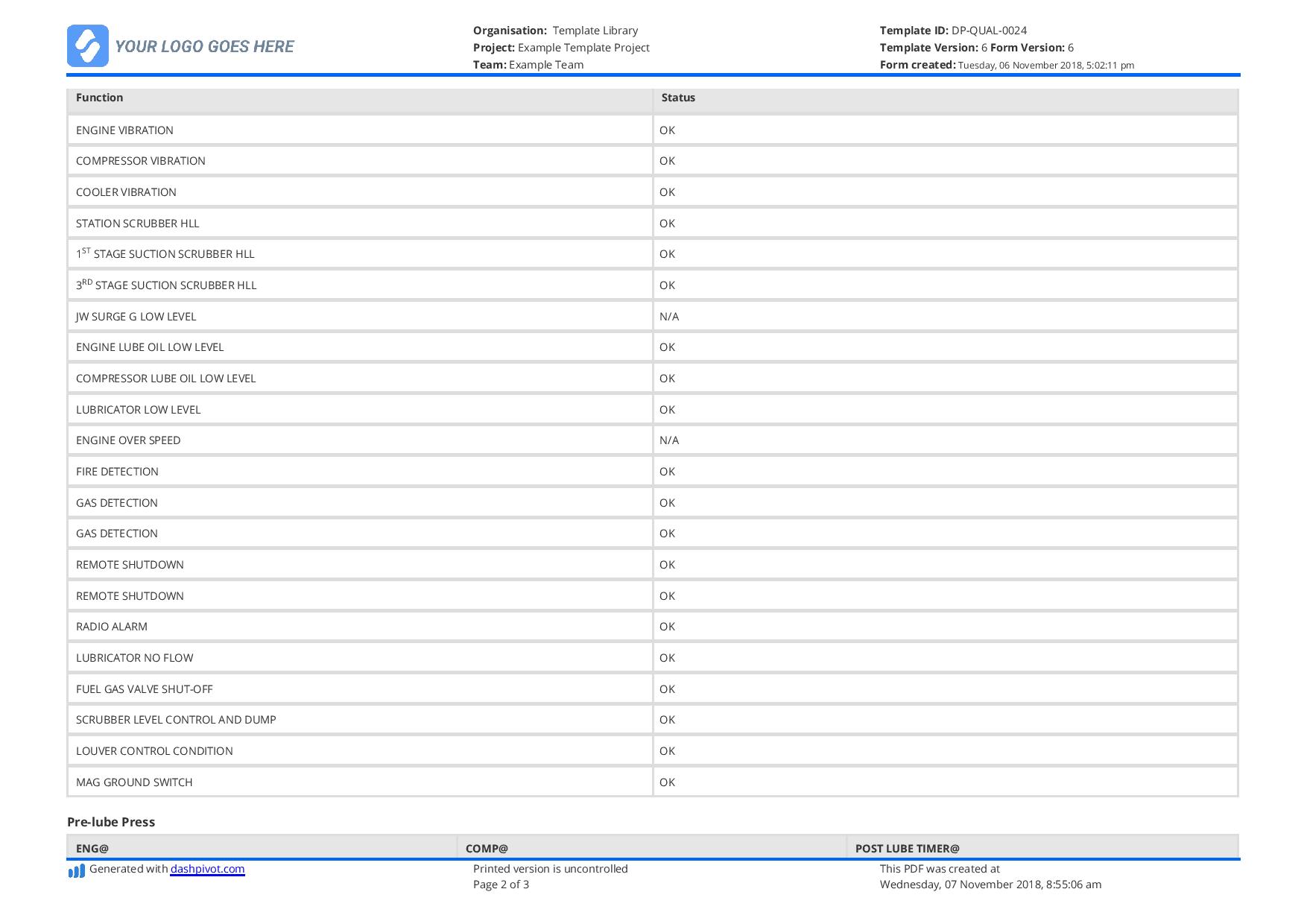Electrical Quality Control Checklist Template: Free Editable PDF
Start with a free 30-day trial. No credit card required.

~200 employees
~20 employees
~25,000 employees
~40 employees
~10,000 employees
~1,500 employees
~35,000 employees
What is an Electrical Control Safety Checklist?
An electrical control safety checklist is a step-by-step guide used to inspect and verify that electrical control systems and equipment are operating safely and efficiently. It includes tasks like checking for secure connections, proper grounding, exposed wiring, and functional emergency shut-offs, ensuring compliance with safety standards. This proactive tool helps prevent hazards like short circuits, fires, or equipment failures, protecting people, preventing downtime, and maintaining smooth operations. Essentially, it’s a thorough safety health check for electrical systems, ensuring everything runs safely and reliably.
Compare this Checklist to Manual PDFs, Docs, and Excel Spreadsheets
Use this electrical quality control checklist for free.
Why Industries Should Use Electrical Quality Control Checklist?
Industries should use an electrical quality control checklist because it keeps people safe, ensures equipment works properly, and helps meet legal requirements. In Australia, strict safety rules mean businesses need to double-check everything, especially during tasks like compressor commissioning. A checklist makes sure nothing is missed, from testing wires to checking power levels, preventing accidents and costly breakdowns.
It’s a simple way to avoid mistakes, protect workers, and keep operations running smoothly. For any industry, it’s a practical tool that saves time, money, and stress.
What elements are required to be included in any PDF or digital Electrical Control Safety Checklist?
A good electrical control safety checklist should include the following key elements:
Visual Inspection: Carefully inspect all wiring, connections, and components for any visible damage, wear, or corrosion. Look for loose terminals, exposed wires, or anything that could pose a safety risk.
Voltage and Current Tests: Use the right tools to measure voltage and current levels, ensuring they match the equipment’s specifications. Incorrect levels can lead to equipment failure or create safety hazards.
Earth and Grounding Tests: Make sure all electrical systems are properly grounded to prevent electric shocks or fires. This includes testing earth resistance and ensuring grounding connections are secure.
Circuit Breakers and Fuses: Check that circuit breakers and fuses are the correct size and type for the system. Test their operation to confirm they can cut power during a fault.
Insulation Resistance Tests: Carry out tests to check the insulation quality of wires and components. Poor insulation can cause short circuits, damage equipment, or even start fires.
Safety Switches: Test residual current devices (RCDs) or safety switches to ensure they trip quickly in the event of a fault. This is crucial for preventing electric shocks and keeping workers safe.
These steps help maintain safety, meet compliance standards, and ensure electrical systems function properly.
Who could benefit from reliable Electrical Control Safety Checklists?
Reliable Electrical Control Safety Checklists are vital for ensuring compliance and reducing risks in workplaces. They help businesses, electricians, and facility managers systematically inspect electrical systems, identify hazards, and document safety measures. These tools are especially crucial in high-risk industries like construction, mining, and manufacturing, where complex electrical systems require thorough maintenance to prevent accidents and ensure safety standards.
Safety officers, engineers, and contractors rely on these checklists to conduct detailed inspections and audits, covering every aspect of electrical safety from installation to maintenance. By using them, they can meet regulatory requirements, protect employees, and avoid costly fines or downtime. The checklists also help build trust with clients by demonstrating a commitment to safety and professionalism.
Employers and employees benefit from the clear framework these checklists provide, ensuring safety protocols are followed and fostering a culture of safety. In high-risk environments, they help identify and address faults early, protecting workers and maintaining operational efficiency. Overall, these checklists are essential tools for creating safer workplaces and preventing electrical incidents.
Other popular templates you can use and customise for free

Quality Control Checklist for Construction
Improve the quality on your projects through simple yet powerful checklists using this flexible and proven framework.

Quality Assurance Plan Checklist
Make sure your quality assurance plans cover what they need to, to create internal and external confidence in your work.

Concrete Inspection Checklist
Ensure your concrete placements are inspected, recorded and quality controlled with this checklist template.
This Quality Control Checklist was generated with Dashpivot
You can control and modify this checklist for other electrical quality control jobs with ease:
- Easily complete, edit and clone your checklist on computer, mobile or tablet.
- Manage your electrical quality control checklists in the cloud, where they are stored securely and always accessible. This saves the uploading, downloading and emailing of fragmented documents.
- Download, print or send electrical quality control checklists as CSV or PDF documents with your logo.
Sitemate builds best-in-class software tools for built world companies.

